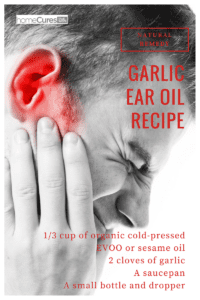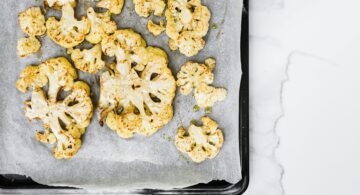Garlic – the Medicinal Herb!
If you were to list those things in life that you wouldn’t want to do without, I doubt that garlic would rank high on your list. But Louis Diat, the late great French chef, took garlic very seriously when he wrote, “Without garlic I simply would not care to live.”
Garlic is a strange herb:
- It’s cherished for its culinary qualities.
- It’s praised for its health benefits.
- It’s shunned for its tendency to produce bad breath and body odor!
Garlic is truly a most versatile herb, not only in the kitchen, but also in the infirmary. Since ancient times, garlic has been used by health practitioners to treat a wide variety of ailments. Today, modern science has confirmed many of those benefits.
Garlic possesses powerful anti-viral, anti-bacterial, anti-fungal, and anti-oxidant properties.[1] This explains why garlic is so effective against so many different health problems.
The primary compounds in garlic that produce its medicinal benefits include: allicin, ajoene, allyl sulphides, and alliin.[2] These are sulfur-rich compounds that contribute to the herb’s strong odor.
Garlic’s Medicinal Applications
The compounds in garlic are so versatile that it’s difficult to narrow down their applications to a short list. Below are just a few of garlic’s many uses:
1. Garlic is an anti-viral.
Garlic can help prevent and shorten colds, flus, bronchitis, and other viral infections.[3] One 12-week study conducted through the “cold season” demonstrated that those who took garlic supplements had 63% fewer colds with shorter durations than those who took placebos.[4]
Dosage: For prevention and treatment, simply add garlic to your soups and dishes. Also, either take a garlic supplement as recommended by the supplier or eat a fresh garlic clove with meals, two to three times per day.[5]
2. Garlic is an anti-bacterial.
Garlic was used as an antibiotic to prevent infections in wounds during WWI and II.[6] There is evidence to suggest that fresh garlic can kill food-borne bacteria such as E. coli and salmonella and prevent food poisoning.[7], [8] Also, bacteria don’t seem to be able to mutate to become resistant to garlic like they do with pharmaceutical antibiotics.[9]
Usage: Add fresh, crushed garlic to your favorite soups, meats, and dishes. Toss raw, minced garlic into a salad. Always follow safe food handling guidelines to avoid contaminated food.
3. Garlic is anti-fungal.
Garlic can be used to help cure ringworm, athlete’s foot, jock-itch and other fungal infections.[10] The compounds in garlic also demonstrate effectiveness against yeast infections and parasites.[11]
Usage: In the case of fungal infections on the skin, one can simply apply the juice of fresh, crushed garlic or olive oil infused with garlic to the infected area once or twice a day.[12]
4. Garlic is an anti-oxidant.
The allicin in garlic helps lower blood pressure and lowers cholesterol. Additionally, ajoene helps prevent the formation of clots in the blood vessels. These factors make garlic good for the heart and help keep free radicals from damaging it.[13]
Also, the allyl sulphides found in garlic inhibit the formation of cancer cells in the body.[14] People take garlic to prevent breast, colon, rectal, stomach, prostate, and lung cancer and to treat bladder and prostate cancer.[15]
Dosage: Add fresh garlic to salads, soups, dishes and meats. You can also eat a fresh garlic clove with meals two to three times per day. [16]
Administering Garlic as Medicine
Although garlic is considered a safe herb, it is strong and can cause intestinal distress if too much is eaten. One clove of garlic equals approximately 1 gram. For medicinal purposes, a person may wish to take 1 to 4 grams of garlic per day.
For those applications requiring allicin, fresh, crushed garlic is best because this releases and retains the most allicin. Many of the aged-garlic supplements that eliminate the garlic taste and odor have processed most or all of the allicin out of them.[17]
One very palatable way to introduce garlic into your diet is to create a salad dressing. Simply press a few garlic cloves with a garlic press and mix with extra virgin olive oil; add salt and your favorite spices.[18]
Garlic infused olive oil is considered a great prevention and cure for ear infections and may also boost the immune system when administered regularly.[19] Below is a recipe for making your own ear oil. Apply the ear oil with an eyedropper. Warm the oil in the eyedropper by running warm water over it before administering. Place just a few drops in each ear and repeat until the infection goes away.[20]
Garlic Ear Oil Recipe[21]
Ingredients:
- 1/3 cup of organic extra virgin cold-pressed olive oil or sesame oil
- 2 cloves of garlic
- A saucepan
- A small bottle and dropper
Directions:
- Bring 1/3 cup of oil and 2 whole peeled garlic cloves to a simmer in the saucepan.
- Let the oil and garlic simmer and bubble for about 5 minutes. Wait until the oil stops popping, and periodically press the garlic with a fork or spoon to help it release.
- Let your ear oil cool.
- Strain the ear oil, separating it from the garlic.
- Pour the strained ear oil into an eyedropper bottle.
Probably the most pleasurable way to take garlic is by integrating it into your diet. Add fresh garlic into soups and nearly any meat, vegetable or starch dish you might prepare.
If you don’t happen to be a garlic lover, perhaps the following quote will motivate you!
“Since garlic then hath powers to save from death, bear with it though it makes unsavory breath.” – Salerno Regimen of Health
My wife and I maintain an unspoken rule when it comes to dealing with garlic breath: If one of us eats garlic, we both eat garlic!

























